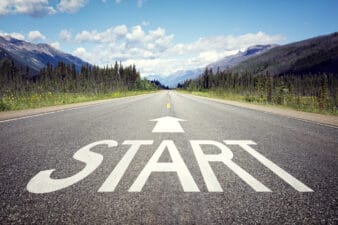Take Stock is the Motley Fool Canada’s free investing newsletter. To have future editions delivered directly to you, simply click here now.
Dear Fellow Fools,
It’s been a big week for Canada’s Big 3 telecommunication companies.
Earlier this summer, The Globe and Mail reported that U.S. telecom giant Verizon (NYSE:VZ) was interested in making a play for Wind Mobile, one of the upstart (but now failing) wireless players that was meant to finally bring some competition to a space dominated by Rogers (TSX:RCI.B), Telus (TSX:T), and BCE (TSX:BCE) – aka, the Big 3.
The market, as well as this Fool, largely disregarded the “news” as, given Verizon’s size, it seemed ridiculous. Sure enough, a week later, an initial bid of $700 million was made for Wind Mobile by none other than … Verizon.
Thus began two months of rampant speculation, political posturing, PR campaigning, grown men whining, and, most importantly to shareholders, sizeable declines in the value of their telecom shares.
From the time the Globe headline hit the newsstands in mid-June up until last week, the Big 3 telecoms lost, by my calculation, a combined $6.957 billion in market capitalization. Let’s call it $7 billion.
Running scared
Verizon signified a real competitive threat to what is one of the primary growth drivers behind these 3 telecom companies. In the face of a declining wireline business for the likes of BCE and Telus, and a cable/satellite television industry that has been turned on its head in recent years, one of the only seemingly clear paths to growth in the telecom space is that the use of wireless devices continues to increase.
Verizon significantly muddled the picture — the introduction of a significant fourth player tossed some uncertainty, every investor’s favourite word, into the mix. Suddenly, the path to growth that wireless provided was no longer clear.
Verizon’s recent proclamation that it will not pursue a Canadian strategy has returned a degree of clarity and perked up the share prices of all three incumbents. At this point, the path to wireless glory is once again clear.
Water under the bridge, right? Well, not so fast.
Given the Canadian government’s seemingly insatiable desire to introduce a meaningful fourth wireless player to our country, there is very likely another shoe to drop. Let’s have a look at the impact it could have on investors.
Known knowns
Here’s what we think we know is coming down the pipe (does anyone really ever know when it comes to the government?).
- September 17 marks the application deadline for those who intend on participating in the next spectrum auction. For the uninitiated, spectrum is essentially the invisible road upon which your wireless signals travel. The Canadian government still owns some of these roads. To carry more wireless traffic, wireless providers need more roads; four are being put up for sale and will be potentially bid for by those who are signed up by the September deadline.
- The actual auction of these four roads (which, to further confuse, are in fact called “blocks”) is set for January 2014. This is an event that the Big 3 have been waiting on, and building a war chest for, for a long time.
The kink here is that two of the blocks have been set aside for “new entrants”. Verizon would have qualified as a “new entrant”. The three incumbents are only allowed to bid for one block each. In my view, one of the Big 3 is going to be left out and the other two are likely to pay through the nose for the two remaining blocks.
- The government has not wavered from its desire to have a significant fourth wireless player. In addition, the government has pledged to carry on with the spectrum auction as scheduled, despite Verizon stepping aside.
- The Globe has reported that AT&T, T-Mobile, Vodafone, Telenor Group, and NTT Docomo have poked around in the Canadian wireless market, and though none went as far down the road as Verizon, all arrived at the same conclusion. Given the competitive dynamics that exist, and the relative size of the market, a Canadian wireless strategy for these foreign firms makes no sense. Even western Canada’s Shaw Communications (TSX:SJR.B) took a pass on pursuing a wireless strategy.
Let’s quickly recap — as this is a lot to get your head around!
We’ve got three incumbents that are firmly entrenched, yet heavily reliant on the wireless portions of their business for future growth. An opportunity to expand this business is coming, but they are likely to have to pay dearly for this opportunity. Potential competitors have had a sniff at pursuing a Canadian wireless strategy, but all have backed away. The alternatives to the Big 3 that do exist are in dire financial straits. And overarching the whole ball of wax is a government regulator that appears hell-bent on somehow attracting more wireless competition, even though the business case doesn’t make any sense.
Now what?
Wireless is just a portion of what these three companies do, and from an investor’s perspective, there is still a lot to like about each. Chiefly, all three pay a fantastic, sustainable, dividend. But three key words give me pause:
What’s priced in?
If a wildcard decision by the government is being reflected in the current valuation of these names, our capital should be relatively safe if we chose to invest in them. If not, there could be a better time to go telecom shopping.
To help answer our question, have a look at the following table, which provides a comparison of current multiples to their historical averages:
| Company |
Price-to-Earnings (LTM) |
5-Year Average P/E |
Price-to-Book |
5-Year Average P/B |
| Rogers |
12.2 |
15.2 |
5.4 |
5.1 |
| Telus |
16.7 |
13.6 |
3.0 |
2.0 |
| BCE |
13.9 |
14.3 |
3.1 |
2.3 |
Source: Capital IQ. LTM = Last 12 months.
In terms of earnings at least, only Telus looks to be on the expensive side. Price-to-book is another story, as all three sit above their historical average.
All else being equal, this is an indication that the market is putting a higher probability on the future looking much like the past than banking on some sort of coming change in the industry.
The Foolish Bottom Line
For an investor looking for yield, a telecom allocation of some size probably makes sense.
However, it’s important to realize that these companies are not without risk. After all, one of their best businesses faces a very serious competitive threat – the Canadian government.
Some unknowable move between here and the spectrum auction in January, or beyond, is not being reflected by current valuations and should it occur, is likely to once again throw these companies into a relative state of turmoil. Tailor your expectations accordingly if you’re thinking of venturing into the Canadian telecom space.
One final note: Be sure to follow us on Twitter and Facebook for the latest in Foolish investing.
‘Til next time … happy investing and Fool on!
Sincerely,
Iain Butler
Senior Analyst
The Motley Fool Canada
Iain Butler does not own any of the companies mentioned. The Motley Fool doesn’t own any of the companies mentioned.








